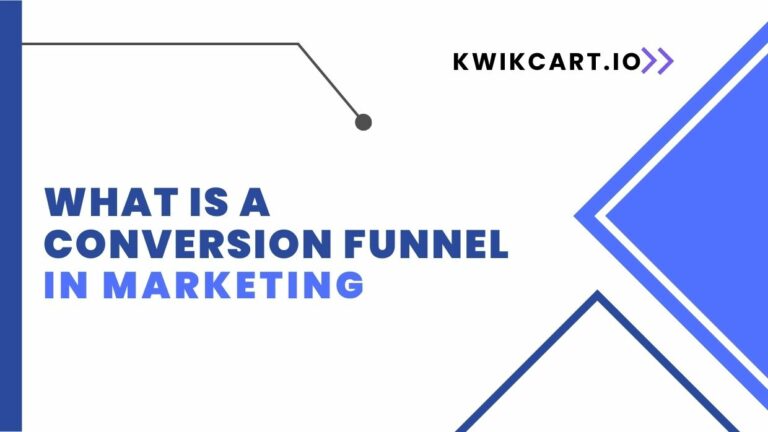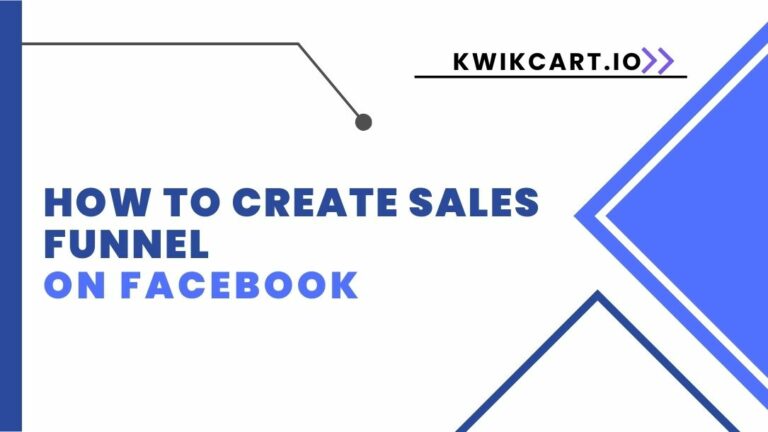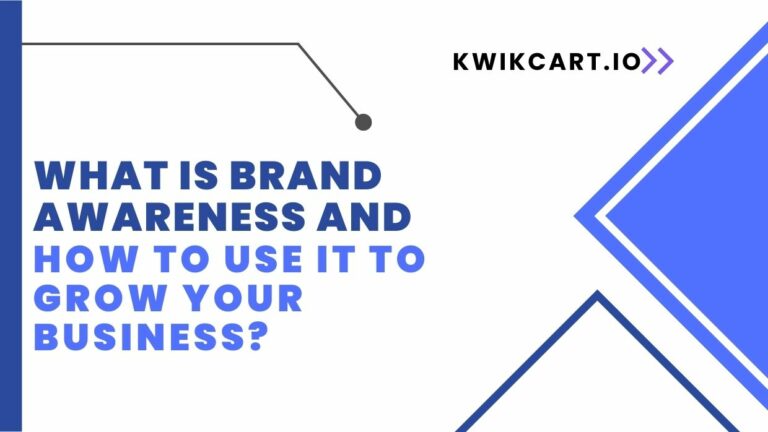How to Create a Sales Funnel on Shopify
In this blog post, we’ll show you “How to Create a Sales Funnel on Shopify” in just a few simple steps. Are you looking to boost your online sales and take your Shopify store to the next level? If so, then you need a well-crafted sales funnel that will guide potential customers toward making a purchase. A sales funnel is an essential marketing tool that can help increase conversions and drive more revenue for your business. So buckle up, grab a coffee, and let’s get started!
Overview of Sales Funnels
Sales funnels are a powerful tool for any e-commerce business. By creating a sales funnel, you can increase your conversion rate and boost your bottom line.
A sales funnel is a series of steps that you lead your customers through to make a purchase. Typically, a sales funnel starts with Awareness and moves through Interest, Decision, and finally Purchase.
There are many different types of sales funnels, but in this article, we’ll focus on how to create a sales funnel on Shopify. To do this, we’ll use the Shopify Sales Funnel app.
With the Shopify Sales Funnel app, you can create a customized sales funnel for your store in minutes. Simply choose the type of product you’re selling, and the app will generate a customizable sales funnel for you. You can then add or remove steps as needed to create the perfect sales funnel for your business.
Once you’ve created your sales funnel, it’s time to start driving traffic to it. The best way to do this is through paid advertising. By running ads that target customers at each stage of the funnel, you can ensure that they see your offer at just the right time.
When done correctly, paid advertising can be an incredibly effective way to drive traffic and conversions through your sales funnel. So if you’re ready to take your e-commerce business to the next level, download the Shopify Sales Funnel app today and start building your own custom sales funnels!
What is Shopify?
Shopify is a platform for businesses of all sizes to create an online store. It offers users a customizable platform, an easy-to-use checkout process, and a wide range of features. Shopify also has a strong support community and extensive documentation.
Steps to Create a Sales Funnel on Shopify

A sales funnel is a powerful way to increase conversion rates and boost sales on your Shopify store. By directing customers through a series of targeted steps, you can guide them toward becoming paying customers. Creating a sales funnel on Shopify is simple and only requires a few minutes to set up. Follow these steps to create your own:
Choose a goal for your sales to funnel: What do you want your funnel to achieve? Increased conversion rates, higher average order values, or more repeat customers? Once you know what you want to accomplish, you can tailor the steps in your funnel accordingly.
Decide which products to promote: Not all products are suitable for promotion through a sales funnel. Think about which products will best fit the goals of your funnel and which ones will be most appealing to your target audience.
Create an enticing offer: To get customers interested in buying from your store, you need to offer them something they can’t resist. This could be a discount, free shipping, or exclusive access to a new product launch.
Drive traffic to your landing page: Once you have created your landing page (more on that below), it’s time to start driving traffic to it. There are numerous ways to do this, including paid advertising, social media marketing, and email marketing.
Convert visitors into leads: Once visitors land on your landing page, it’s up to you to convert them into leads. This could be done by offering a coupon code or a free trial of your product.
Nurture leads with email campaigns: Once you have a list of leads, it’s time to start nurturing them with targeted email campaigns. These should include information about special offers, new products, and more.
Convert leads into customers: The last step in your sales funnel is converting leads into customers. This could be done through targeted upsells and cross-sells, retargeting ads, personalized discounts, and more.
By following these steps, you can create an effective sales funnel on Shopify that will help increase conversion rates and boost sales for your store.
Understanding Your Audience and Their Needs
Any good sales funnel starts with a deep understanding of your audience and their needs. Only then can you create a funnel that will guide them through the purchase process and lead them to conversion?
To understand your audience, start by segmenting them into different groups based on common characteristics. This could be things like age, location, gender, interests, or even pain points. Once you have a few different groups defined, take some time to research each one. Try to understand what motivates them, what challenges they face, and what solutions they are looking for.
Once you have a good understanding of your audience segments, you can start creating content that speaks to their needs. This could be blog posts, social media posts, email campaigns, or even ads. The key is to create content that is relevant and helpful to each group so that they are more likely to convert into customers.
How to Generate Leads Using Shopify
Assuming you have a Shopify account set up, there are a few key ways to generate leads using the platform:
Install Shopify’s lead capture app: This app allows you to create pop-ups and other forms of lead capture that will appear on your Shopify site. You can use these forms to collect email addresses, which you can then use for marketing purposes.
Use Shopify’s built-in blog: A blog is a great way to attract visitors to your site and get them interested in what you have to offer. Use your blog to write helpful articles that show off your expertise, and be sure to include calls-to-action (CTAs) that invite readers to learn more about your products or services.
Leverage social media: Social media platforms like Twitter, Facebook, and Instagram can be great places to generate leads for your Shopify business. Use social media to share your blog articles, promote special offers, and run targeted ads that encourage people to visit your Shopify site.
Optimizing Your Funnel for Maximum Conversions
Assuming you have a Shopify store set up, there are a few key ways to optimize your sales funnel for maximum conversions.
To start, it’s important to make sure your Shopify theme is optimized for conversion. This means ensuring that it’s easy for visitors to find what they’re looking for and that the overall design is clean and simple.
Next, you’ll want to make sure your checkout process is as streamlined as possible. This means having a clear call-to-action on each page and minimizing the number of steps required to complete a purchase.
Finally, it’s important to track your results so that you can continually optimize your funnel. Use tools like Google Analytics to track conversions and identify which areas of your funnel may be losing potential customers.
Measuring and Analyzing Your Results
After you’ve built your sales funnel and driven traffic to it, it’s time to measure and analyze your results. There are a few key metrics you’ll want to track:
- The number of visitors to your sales funnel
- The conversion rate of visitors to leads
- The conversion rate of leads to customers
- The average order value of customers
By tracking these metrics, you’ll be able to see how well your sales funnel is performing and where there might be room for improvement.
To track the number of visitors to your sales funnel, you can use Google Analytics. To find your conversion rates, you can calculate them yourself or use a tool like LeadPages. And to track the average order value of customers, you can use Shopify’s built-in analytics tools.
Once you have all this data, it’s time to start analyzing it. Look at each metric and ask yourself what it’s telling you about your sales funnel. Are there any areas where you’re losing a lot of visitors? Is your conversion rate low? Is your average order value low? By answering these questions, you’ll be able to identify areas for improvement and make changes to improve your sales funnel’s performance.
Read more… How to Make Sales Funnel in WordPress
Conclusion
Creating a sales funnel on Shopify is an effective way to optimize your store for increased conversions and revenue. By following the steps outlined in this article, you will be able to create a comprehensive and powerful sales funnel that has all of the features you need to maximize your profits. With careful planning and implementation, you can create an automated system that brings in more customers while still delivering personalized customer service. Best of luck with optimizing your Shopify store!







